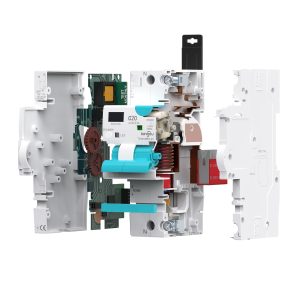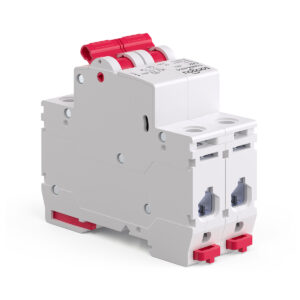
RCBO Trips at Night? Causes, Diagnosis, and Lasting Fixes
RCBO Trips at Night? Causes, Diagnosis, and Lasting Fixes Already know what an RCBO is? Great. This page skips the basics and focuses on nocturnal
Working inside your home’s electrical panel — the true heart of your home’s electrical system — requires knowledge, precision, and respect. Understanding how to safely manage your breaker box is essential for preventing common electrical panel mistakes that can lead to short circuits, power outages, or even electrical fires.
Whether you’re a careful homeowner, a passionate DIYer, or a professional electrician, knowing what not to do is just as critical as knowing the right procedures. In this guide, Tongou, a leading manufacturer of advanced circuit protection and smart breaker solutions, shares expert insights to help you maintain a safe and efficient electrical system in your home or workspace.
The Mistake: This is perhaps the most overlooked yet frustrating error. After initial installation or modifications, many skip the vital step of clearly labeling each circuit. The consequence? When an issue arises, or you need to isolate power for maintenance, you’re left guessing which breaker controls which area – wasting precious time, increasing frustration, and potentially compromising safety by working on live circuits.
Why It Matters (Expertise): Clear labeling is the cornerstone of efficient troubleshooting and safe electrical work. It allows for quick identification of circuits, preventing accidental shocks and damage during maintenance. The National Electrical Code (NEC) emphasizes the importance of clear identification for all circuit breakers.
Pro Tip: Implement a detailed and unambiguous labeling system directly inside your panel door. Use legible handwriting or printed labels. Consider mapping out your home’s circuits diagrammatically for extra clarity.
The Mistake: While individual circuits might appear to function correctly, the panel’s total electrical load can often exceed its rated amperage. This silent killer leads to chronic overheating, frequent nuisance tripping, and in severe cases, insulation degradation and electrical fires.
Why It Matters (Expertise): An electrical panel is designed for a specific maximum current capacity (e.g., 100A, 200A). Exceeding this limit overstresses the main service wires and connections, generating excessive heat that can damage components or ignite nearby materials.
Pro Tip: Always check your main service panel’s rating. When adding new appliances, especially high-power devices, calculate your total anticipated load to ensure it remains within safe limits. Distribute high-demand devices across different circuits where possible. If your needs grow, a panel upgrade might be necessary.
The Mistake: Pairing a wire that is too thin (higher gauge number) with a high-current breaker is a recipe for disaster. This mismatch causes the wire to overheat under normal load, potentially melting its insulation and leading to short circuits, arc faults, or even catastrophic fires.
Why It Matters (Expertise): Wires have specific current carrying capacities (ampacities) determined by their gauge. A 15A circuit requires at least 14 AWG wire, while a 20A circuit needs 12 AWG. Using a smaller gauge wire acts like a bottleneck, restricting current flow and generating heat.
Pro Tip: Always match the wire gauge precisely with the breaker’s amperage rating, as per NEC guidelines. When in doubt, always use a thicker gauge wire than minimally required – it’s safer and allows for future upgrades.
The Mistake: Cables entering metal electrical panels or junction boxes often pass through sharp-edged openings. Failing to protect these points with clamps, connectors, or insulated bushings leaves the cable insulation vulnerable to cuts, abrasion, and eventual failure, leading to dangerous shorts or electric shocks.
Why It Matters (Expertise): Over time, vibrations or slight movements can cause the metal edge to wear through the cable’s outer jacket and even the individual wire insulation. This exposes live conductors, creating a direct path for current to flow to the metal panel, energizing it and creating a severe shock hazard.
Pro Tip: Always use appropriate cable connectors, strain relief fittings, or insulated bushings at every point where a cable enters a metal enclosure. This protects the cable from physical damage and ensures a secure, compliant installation.
The Mistake: Improper or entirely missing grounding is arguably one of the most common and perilous issues in residential electrical systems. It severely compromises the safety mechanisms designed to protect against electric shock and can lead to erratic performance of sensitive electronics.
Why It Matters (Expertise): The grounding system provides a safe path for fault current to return to the source in the event of a short circuit, allowing the breaker to trip and de-energize the circuit. Without proper grounding, fault current has no safe path, potentially leaving metal appliance casings or tools energized, posing a lethal shock risk. It’s a critical component of the “three-wire” system (hot, neutral, ground).
Pro Tip: Regularly inspect all ground wires to ensure they are firmly connected to the grounding bus bar within the panel and extend correctly throughout your home’s wiring. If you encounter ungrounded outlets, consult a licensed electrician for remediation.
The Mistake: In an attempt to save space or simplify wiring, some DIYers improperly place several neutral wires under a single terminal screw on the neutral bus bar. This practice, while seemingly convenient, creates loose connections, poor electrical contact, and can lead to dangerous arcing, overheating, and circuit malfunctions over time.
Why It Matters (Expertise): Each neutral wire carries return current for its specific circuit. When multiple wires share a single terminal, the connection is inherently less secure and less capable of carrying the combined current without resistance. This increased resistance generates heat and can lead to intermittent connections or dangerous electrical arcs. The NEC strictly prohibits this practice.
Pro Tip: Each neutral wire MUST have its own dedicated terminal screw on the neutral bus bar. Ensure all connections are tightened to the manufacturer’s specified torque. Proper wiring ensures consistent current flow, reduces resistance, and promotes much safer, more reliable connections.
The Mistake: A jumbled mess of wires inside a breaker panel is not just an eyesore; it’s a functional and safety hazard. Disorganized wiring traps heat, makes future troubleshooting and maintenance exceedingly difficult, and increases the risk of accidental damage to insulation.
Why It Matters (Expertise): Neatly routed wires allow for proper airflow within the panel, helping to dissipate heat generated by current flow. Tangled wires create “hot spots” and make it difficult to trace circuits, identify specific wires, or work safely without disturbing other connections.
Pro Tip: Keep wires neatly bundled using cable ties or wraps, allowing for gentle curves rather than tight bends. Route wires along the edges of the panel where possible. This improves airflow, simplifies future work, and enhances safety.
The Mistake: Finding loose, exposed, or improperly capped wires within a circuit breaker panel is a serious safety violation. These “hidden dangers” can accidentally come into contact with live terminals or the metal panel itself, causing short circuits, sparks, or even radio frequency interference (noise) in other circuits.
Why It Matters (Expertise): Any uninsulated conductor that isn’t properly terminated poses an immediate and severe shock or short circuit hazard. Even if a wire is currently “dead,” it could become live if a breaker is flipped or rewired incorrectly in the future.
Pro Tip:Always cap unused wires with approved wire nutsand secure them properly within the panel or junction box, ensuring they cannot make accidental contact with other components. If a wire is permanently removed, it should be disconnected at both ends.
The Mistake: This is perhaps the most critical and potentially fatal error: never assume the power is off just because you’ve flipped a breaker. Relying solely on the position of a breaker switch can be misleading; faulty breakers or incorrect wiring can mean a circuit is still live.
Why It Matters (Expertise): Contact with live electricity can cause severe burns, cardiac arrest, or death. A voltage tester is your last line of defense. Always remember the “Lockout/Tagout” principle for absolute safety during maintenance.
Pro Tip: Always use a reliable non-contact voltage tester (NCVT) or a multimeterto verify that circuits are completely de-energized before touching any wire. Test the tester on a known live circuit first, then test the target circuit, and finally, test the tester on the live circuit again to ensure it’s functioning correctly.
The Mistake: Electricity is undeniably complex and unforgiving. Many DIYers, driven by confidence or cost-saving, attempt to replace breakers, modify panel wiring, or perform major electrical upgrades without the requisite knowledge, training, or experience. This is not the realm for trial and error.
Why It Matters (Expertise): Electrical codes (like the NEC), safety standards, and best practices are intricate. Incorrect installations can lead to code violations, property damage, serious injury, or death. Licensed electricians undergo extensive training and hold certifications to ensure they meet these stringent requirements.
Pro Tip:When in doubt, or for any task beyond your proven competency, ALWAYS hire a licensed and reputable electrician. Investing in professional service is an investment in your home’s safety and your peace of mind.
Q1: What are the most common mistakes in circuit breaker boxes?
A1: The most common issues include missing labels, overloading, wrong wire gauge, poor grounding, and messy wiring inside the panel.
Q2: How can I prevent these circuit breaker problems?
A2: Label all circuits, match wire gauge to breaker rating, ensure proper grounding, and avoid exceeding the panel’s total load.
Q3: What makes Tongou Smart WiFi Circuit Breakers different?
A3: Tongou breakers provide real-time monitoring, remote control, and automatic protection against overloads, voltage issues, and short circuits.
Q4: Can smart WiFi circuit breakers improve safety?
A4: Yes. They allow you to remotely monitor load and instantly shut off circuits, reducing the risk of overheating and electrical faults.
Q5: Are smart circuit breakers suitable for both homes and businesses?
A5: Absolutely. Tongou Smart WiFi Circuit Breakers are designed for residential, commercial, and industrial use.

Johnson Lim is the General Manager of Changyou Technology and has over 10 years of experience in circuit protection technology and residential electrical safety. He is committed to developing and producing safer and smarter electrical products.

RCBO Trips at Night? Causes, Diagnosis, and Lasting Fixes Already know what an RCBO is? Great. This page skips the basics and focuses on nocturnal

MCB B/C/D Curves in Practice: How Inrush Current Shapes Your Choice This guide assumes you already know what an MCB is. If you need a

SPD Coordination for Solar PV and EV Charging: Where to Place Type 1/2/3 Already know the difference between Type 1/2/3 and AC vs DC SPDs?

MCB vs MCCB: A Practical Guide to Icu/Ics and IEC 60898 vs 60947-2 This guide assumes you already know what a breaker is. If you

tongou was established in 1993 and is the trademark of Changyou Technology. We position ourselves as providers of intelligent product solutions for high and low voltage electrical systems, taking on solving customers’ pressures and challenges as our responsibility and creating value for them. We utilize intelligent products to serve global customers, making life smarter and more convenient to benefit your life.
Paidong Industrial Zone Qiligang,Yueqing City,Zhejiang province,China.
Sales: [email protected]
After-sales: [email protected]
© 2025 Changyou Technology. All Rights Reserved.

